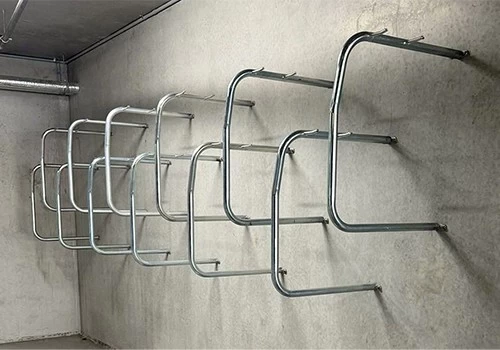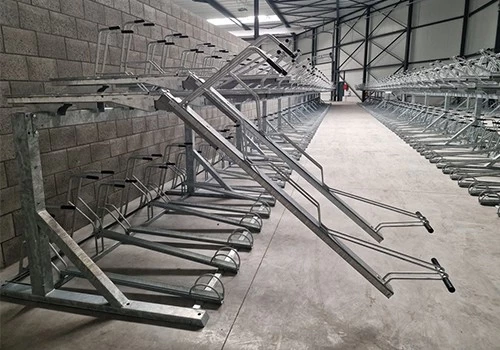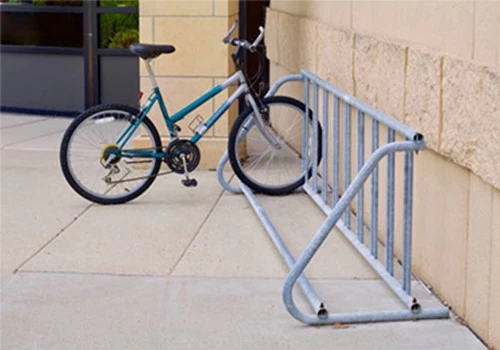Specifications
Model Number : PV-SC-001
Type: Bike parking and storage
Color:Yellow,Black,Green,Red,or Customized.
Style : both indoors and outside
Material : carbon steel
Loading: According to customer need
Size :195*23.2*75cm,200.55*23.2*75cm,or Customized.
Finish: hot-galvanized
Specifications
Model Number : PV-0081-01
Type: Bike parking and storage
Color:silver
Style : both indoors and outside
Material : carbon steel
Loading: According to customer need
Size :Height 1463mm, Depth 1114mm
Finish: hot-galvanized
Model Number : PV-0081-01
Type: Bike parking and storage
Color:Black
Style : both indoors and outside
Material : carbon steel
Loading: 2-10 bikes (According to customer need)
Size :Height 1463mm, Depth 1114mm
Finish: hot-galvanized
Model No.: PV-H1
Size: w605*D400*H330mm
Specification: Round tube:¢16*1.2mm
Finish: Power coated
Net Weight: 1.6 kgs
Packing size:6pcs/ctn
MOQ: 100pcs
Model Number : PV-0024-01
Material : carbon steel/stainless steel
Loading: according customer space size,we can design according the size
Size : W1977*D1130(depend on your parking space)*H2500mm
Finish: Powder coated ,hot-galvanized/electric polish
Packing size :2000*2000*2500mm(40 parking space )
Powder coated ,hot-galvanized/electric polish
Product number:PV-0046-01
Material:carbon steel
Specification:10.2*59*28CM or Customized.
MOQ:100PCS
Port:Shanghai
Trademark:PV
Model Number : PV-0081-01
Type: Outdoor Bike Parking Rack
Style : both indoors and outside
Material : carbon steel
Loading: 2-10 bikes (According to customer need)
Size :170.5*116*148CM
Finish: hot-galvanized
Model Number : PV-0055-01
Type: compact flat pack /slot
Color:black / silver /yellow/optional
Style :Outdoor/indoor
Material : carbon steel/ stainless steel
Capacity : park 6 bikes
Size : L1400*W1054*H840mm
Net weight :38KG
Finish: powder coating / hot galvanized /elctropolishing
Packing size :1490*860*160mm 1pcs/ctn
Product Name: Multi-Capacity Horizontal Two Tier Bike Parking Rack
Material: Carbon Steel
Finish: Powder coated
Post: 80mm * 80mm thickness: 3mm
Steel plate: thickness: 2mm
Dimension: 1325*1890*1830mm
Weight: 370 kg/set
Model: PV-0067-01
Material: stainless steel 304
Pipe: 50 mm* 2.5 mm
Size: 900*700 mm(L*W)
Surface treatment: polishing

In modern urban environments, cycling is rapidly becoming one of the most popular modes of transportation. This growth in cycling culture has brought with it the necessity of providing secure, functional, and aesthetically pleasing indoor bike parking solutions for residential buildings. An ideal bike parking area not only meets practical needs but also enhances the overall living experience for residents. Successfully planning such a space involves a deep understanding of user requirements, spatial constraints, and the latest trends in bike storage design.
The foundation of a well-designed indoor bike parking area lies in understanding the specific needs of the building’s residents. Cyclists have diverse requirements depending on their usage patterns, bike types, and personal preferences. For instance, a family using bicycles for daily commutes and school runs will need a parking area that accommodates child seats and cargo bikes, while occasional cyclists might prioritize ease of access over storage density. Conducting a survey or holding informal discussions with residents can provide valuable insights into these needs. It’s essential to also consider the broader cycling culture in the city or region, as this will influence the number of residents likely to use the facilities. By tailoring the space to the users, the design can achieve both functionality and resident satisfaction.
The placement of the indoor bike parking area is a critical factor that impacts its usability and popularity among residents. Ideally, the space should be located close to the building’s main entrances or common pathways to minimize the effort required to transport bikes. Proximity to elevators or ramps is another important consideration, especially in multi-story buildings. A poorly placed bike parking area, such as one in a distant basement corner, can deter residents from using it, leading to bikes being left in hallways or other unsuitable spaces. Furthermore, visibility and lighting play a major role in ensuring that users feel safe when accessing the area, particularly during nighttime. A well-lit and strategically located bike parking area not only enhances security but also integrates seamlessly into the daily routines of residents.

Choosing the Right Bike Parking Racks
Selecting appropriate bike racks is a cornerstone of effective parking solutions.
a, Floor bike racks are simple and accessible but require more space.
b, Wall-mounted racks save floor space but may require lifting, which might not suit all users.
c, Two-tier bike racks double the capacity but are best for buildings with frequent cyclists.
Space is often at a premium in residential buildings, making it imperative to maximize the use of available areas while maintaining user comfort. A well-thought-out layout can significantly increase the number of bikes stored without creating a cramped or difficult-to-navigate environment. While floor racks are the simplest option, vertical racks and two-tier systems are gaining popularity for their ability to save space. Vertical storage, for example, is ideal for buildings where floor space is limited but ceiling height is abundant. However, these systems must be easy to use, as lifting a bike can be a challenge for some residents, such as children or elderly individuals. When planning the layout, it’s essential to leave sufficient clearance for maneuvering bikes in and out of racks, as well as ensuring that the pathways remain accessible and uncluttered.
For residents to trust and consistently use the indoor bike parking area, security must be a central focus of the design. Bicycle theft is a common concern in urban areas, making robust security features non-negotiable. A combination of structural measures and technological solutions can provide the necessary protection. High-quality racks designed to support U-locks or heavy-duty chains are a fundamental requirement. Additionally, integrating access control systems, such as keycard entry or PIN-locked doors, restricts unauthorized access to the parking area. Surveillance cameras and motion-activated lighting further enhance the sense of security, deterring potential thieves and increasing user confidence. A secure indoor bike parking facility not only protects residents' property but also promotes the building’s reputation as a safe and cyclist-friendly residence.
Modern bike parking areas are no longer just storage spaces; they are becoming multifunctional hubs that cater to the varied needs of cyclists. Including amenities like repair stations equipped with basic tools, tire pumps, and e-bike charging points can greatly enhance the value of the facility. These features make it convenient for residents to perform quick fixes or prepare their bikes for daily use without needing to visit a separate workshop. In addition, providing shelving or lockers for accessories such as helmets, gloves, or cycling shoes helps keep the area organized and encourages residents to use the space responsibly. Thoughtful amenities like these contribute to creating a more engaging and supportive environment for cyclists, fostering a sense of community and promoting sustainable transportation.

While functionality is paramount, aesthetics and sustainability are equally important in creating a bike parking area that aligns with modern values and lifestyle preferences. A visually appealing space can transform what might otherwise be a utilitarian facility into an asset that enhances the building’s overall design. Using materials that complement the building’s interior decor, incorporating green walls, or adding artistic elements can elevate the look and feel of the parking area. Sustainability is another key consideration, as environmentally conscious residents appreciate the use of eco-friendly materials and energy-efficient solutions. For example, racks made from recycled materials or lighting powered by solar energy not only reduce the facility’s carbon footprint but also demonstrate a commitment to green living.
A well-maintained bike parking area is essential for ensuring long-term usability and resident satisfaction. Regular inspections should be conducted to identify wear and tear on racks, locks, and other components. Routine cleaning of the space keeps it free from dust and debris, enhancing the overall user experience. Investing in durable, corrosion-resistant materials for racks and fixtures minimizes maintenance costs and prolongs the life of the facility. Additionally, establishing clear guidelines for residents on how to use the space responsibly helps prevent misuse and keeps the area organized. With proper care, an indoor bike parking area can remain an invaluable asset to the building for years to come.
By thoughtfully addressing these aspects, property developers and building managers can create indoor bike parking areas that meet the needs of modern cyclists while adding value to their residential properties. A well-designed space not only improves convenience and security for residents but also promotes a healthier and more sustainable lifestyle, reinforcing the role of bicycles as a central element of urban mobility.